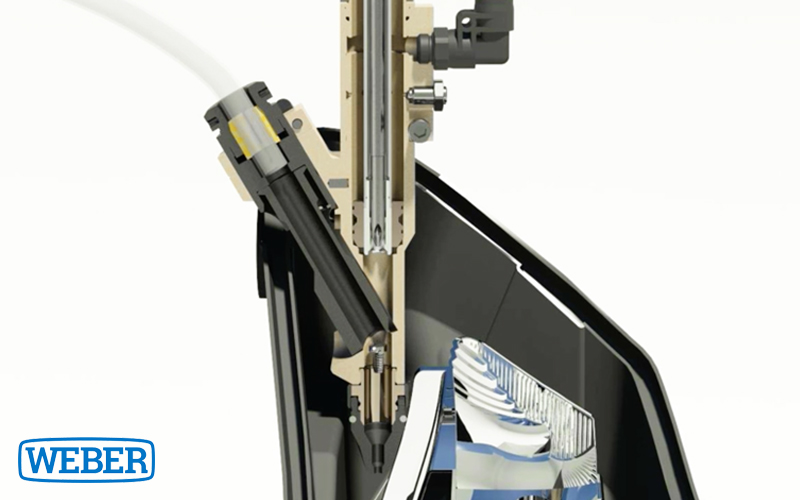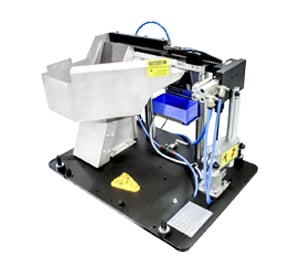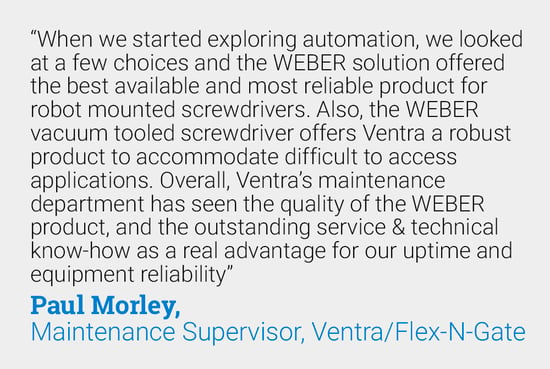4 min read
Dealing with Stripped, Lifted, and Cross-Threaded Screws in Your Automated Screwdriving Assembly
By: Tom Ash Apr 13, 2022 8:30:00 AM

Stripped, lifted, and cross-threaded screws are a major hassle, especially in your automated screwdriving systems. You have to take the affected product off the line and fix the problem manually, which costs you both time and money.
Shouldn't there be a way to avoid these troublesome screw-related issues? The good news is, there is. Read on to discover how.
What Causes Stripped, Lifted, and Cross-Threaded Screws in Your Automated Screwdriving Assembly?
Your automated screw assembly machines run well until a screw gets stripped, lifted, or cross-threaded. What in the process can cause these misalignment issues?
 Stripped Screw Heads & Threads
Stripped Screw Heads & Threads
A stripped screw-head is one in which the engagements in the head have worn down, making it difficult or impossible for a screwdriver bit to get a grip on the screw. You're probably used to old screws in your house getting stripped after years of use, but stripping can also happen to new screws during the assembly process.
Stripped screws in manufacturing can be caused by several factors, including:
- Bad part quality
- Excessive torque
- Incorrect equipment alignment from the screwdriving spindle to the part itself
- Not enough downward force on the driver bit
Lifted Screws
A lifted or high screw can occur when the hole into the part isn't deep enough and the screw bottoms out. If there is a big-enough gap the screw can actually pop out with part relaxation.
The biggest reason screws don’t seat and are lifted is because the torque required to seat the screw properly, and actually have proper clamp load is more than the given torque specification for the design. This is almost always because the hole the screw is threading into is undersized due to molding or casting issues.
Cross-Threaded Screws
A cross-threaded screw occurs when the threads of a screw do not properly align with the threads in the part being fastened. Cross-threading is typically caused when the two parts being fastened together aren't properly aligned, so the holes don't match up. It can also be caused by mismatched thread pitch or a screw being inserted at the wrong angle. Torquing a cross-threaded screw may seem to be effective even though the clamp force created in the joint is not sufficient.
How Can These Issues Be Avoided – or Eliminated?
The first challenge in dealing with these screw-related issues is identifying what is causing the problem. The controllers in WEBER's automatic screwdriver machines can perform detailed data analysis that shows exactly what happened with each affected screw. This enables our experts to identify what is happening and determine how best to address it.
 Eliminating Issues with Handheld Screwdrivers
Eliminating Issues with Handheld Screwdrivers
Handheld electric and pneumatic screwdrivers are prone to operator error, which can be reduced by moving to a handheld screwdriver system. These systems use an automatic screwdriver feeder to eliminate the manual tasks of reaching into a tray, retrieving the screw, and presenting the screw. All the operator has to do is drive the screw and the next screw is automatically fed into the driver, eliminating the source of much human error.
 Eliminating Issues with Fixtured Screwdriving Systems
Eliminating Issues with Fixtured Screwdriving Systems
Fixtured screwdriving systems can also produce ill-fitted screws, primarily due to operator error. WEBER's automated fixtured screwdriving systems take the operator out of the equation, thus minimizing or totally eliminating this type of issue.
Eliminating Issues with Vacuum Screwdrivers in Robotic Systems
Screw-related issues often occur when screws need to be applied in hard-to-reach or confined areas. This can result in screws being dropped, misaligned, cross-threaded and improperly torqued.
The solution to these difficult situations is to use vacuum-based screwdriving technology. The screw is picked up by a vacuum screwdriver through a suction tube that has a constant negative pressure. The vacuum screwdriver firmly grips the screw and properly positions it at the screw hole. This technology is available for both handheld screwdrivers and automated screwdriving machines. It's extremely useful in systems used for human robot collaboration.
Let WEBER Help You Eliminate Stripped, Lifted, and Cross-Threaded Screws
WEBER's handheld and stationary automated screwdriver equipment is the perfect solution to improperly aligned or stripped screws. The WEBER team has been designing and building assembly equipment solutions since 1956 and we know all the problems you may encounter in your manufacturing business. Our goal is to help our partners manufacture high quality products with maximum process reliability and minimal errors. We believe that your success is our success.
Contact us today to learn more about reducing errors in your assembly process. We’re here to make automation easy!







